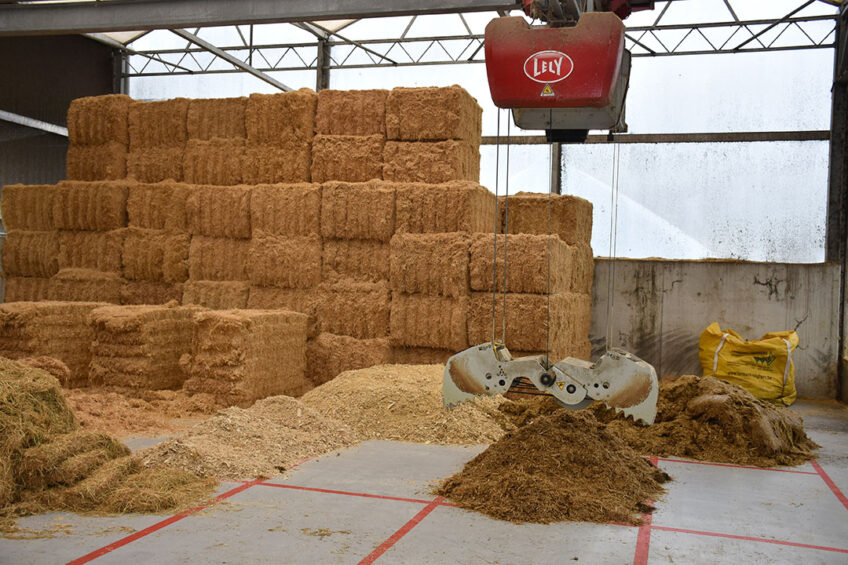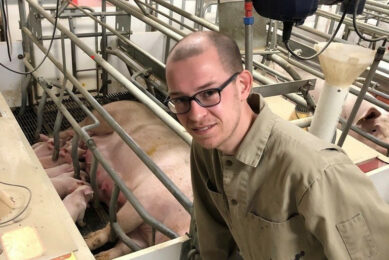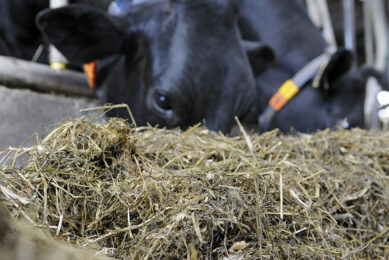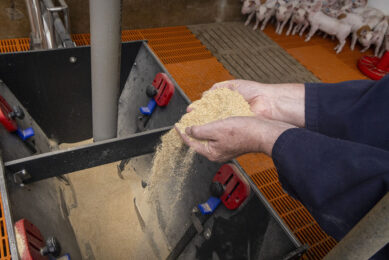Managing silage supplies efficiently

With the winter housing period on dairy farms, a close eye should be kept on the quality and quantity of silage being used to feed the cows.
Climate change is certainly throwing some curve balls into our weather systems recently and this year has been no different. Farmers will be somewhat happier that the milder autumn has stretched the grazing season out a bit over the last season with grass still growing in late October.
Grass is by far the cheapest feed available for dairy cows and the longer grazing season will have saved some costs on concentrates. However, concentrates have recently risen significantly in price, so farmers need to ensure they are using their silage stocks as efficiently as possible.
Testing silage
It’s a big step and stressful time for the cow bringing them into housing for the winter as not only their environment changes but so, too, does the feed ration. Cows require a steady, uniform diet that supplies them with all the nutrients they need for maintenance and production at all times.
Being quite fussy eaters, cows like good silage and that’s another reason farmers should have their silage tested in the winter time to assess its true quality. Armed with this data, farmers and nutritionists can sit and formulate the perfect winter ration for that herd and farm, balanced with the least amount of expensive concentrates as possible.
Cutting silage represents significant costs for dairy farmers. Some farms managed to harvest 4 cuts or more, but that is not always to the benefit of the dairy cow if the latter cuts’ quality is low.
Managing dry matter intakes in the housing period is vital on any dairy farm to ensure the cows have enough nutrients. Ideally, silage should be cut at 16-20% dry matter, and harvested at 30-35% for a pit and 35%-40% for baled silage.
Indeed, dry matter intake is the main limiting factor when feeding dairy cows. Freshly calved cows typically reach peak milk yield 4-8 weeks sooner than they achieve maximum dry matter intakes. This imbalance is referred to as negative energy balance and causes cows to lose weight for the first 80-100 days of lactation. It is important to restrict this loss in body weight to 0.5kg/day, otherwise it can lead to poor fertility and low milk quality.
Managing winter feed
Keeping account of protein levels in the silage and the concentrates is also important in managing winter feed.
A typical dairy concentrate for winter feeding should include 30-45% cereals (maize, wheat, barley), 15-25% digestible fibre (citrus pulp, sugarbeet pulp, soya hulls), 15-25% protein sources (soya, rapeseed), 15-20% cereal by-products (distillers’ grains, maize gluten) and protected fats and minerals.
Common recommendations to farmers for dairy cows in early lactation is that they should be fed a total diet with crude protein of 17-18%. Grass silage with a crude protein content of 12-14% should be supplemented with a concentrate containing 21% crude protein on a fresh weight basis. If the crude protein of the silage is lower, then a higher protein concentrate should be fed. It is important to have a balance of rumen degradable and un-degradable protein sources for example rapeseed and soya bean.
Cows milked twice per day should not be offered more than 10kg of concentrates per cow or 8kg for heifers by in parlour feeding per day.
Most dairy cow housing systems offer ad-lib silage/ration to cows which normally has a 5% feed refusal rate. Cows should have a 45-60cms feed space each to reduce bullying, injuries and stress.
Don’t overfeed concentrates
Dairy farmers often ‘feed to yield’ offering specific levels of concentrates to cows depending on their milk production, but this may, in fact, lower the milk quality.
According to research by AFBI in Northern Ireland, the milk fat percentage, and in some cases, milk protein percentage, decreased at higher concentrate levels.
A study was conducted on 31 farms milking predominantly Holstein Friesian cows with an average annual milk yield of 8,800kg feeding 2.9 tonnes per cow of concentrates offered on a feed-to-yield basis.
Each farm was visited 4-5 times during the study period when silage and concentrates being offered were sampled. On the majority of farms cows were offered a basal ration containing both forage and concentrate ingredients, prepared using a mixer wagon, with additional concentrates offered using in-parlour and out-of-parlour feeding systems.
However, on 7 farms, cows were offered a forage only basal ration, with additional concentrates normally offered using in-parlour and out-of-parlour feeding systems.
All farms adopted a concentrate ‘build-up’ period following calving, before moving onto a feed-to-yield approach. While most farms had started offering concentrates on a feed-to-yield basis by day 30 post-calving, on 3 farms this did not happen until at least day 60 post-calving.
In addition, the feed-rate settings for the concentrate feeders varied between farms. While the majority of farms used a feed-rate of 0.45kg concentrate/kg milk, 5 farms used a feed-rate lower than 0.45, while 2 farms used a higher feed-rate.
Outcomes
As concentrate intakes increased, total dry matter intake also increased, as expected. Silage intakes stayed relatively constant across a wide range of concentrate levels and did not fall off as might have been expected at higher concentrate levels.
However, at a concentrate intake of 8kg per day the diet contained 37% concentrate, while at a concentrate intake of 18kg per day, the diet contained 58% concentrate (DM basis), while diet starch content increased from 12 to 16% (DM basis) across this range of concentrate levels.
So higher yielding cows offered high concentrate levels are more likely to experience digestive problems if the ration is not carefully formulated.
The milk yield response to additional concentrates begins to decrease at higher concentrate levels. However, within feed-to-yield systems milk yields show a linear increase with increasing concentrate levels. This is as expected as additional concentrates are offered according to the milk yield of the cow, rather than the cow responding to the concentrates offered.
As concentrate intakes increased, milk fat percentage decreased on the majority of farms, while milk protein percentage was relatively unaffected by concentrate intake. A further examination of the data indicated that 56% of the reduction in milk fat content could be explained by cow genetics, while the remaining 44% of the reduction was likely explained by the effects of diet.











